The current suit of Copernicus Sentinel satellite missions provide a myriad of information that feeds into the Copernicus Services to help address challenges such as urbanisation, food security, rising sea levels, diminishing polar ice, natural disasters and, of course, climate change. Looking to the future, six high-priority candidate missions are being studied to address EU policy and gaps in Copernicus user needs, and to expand the current capabilities of the Copernicus space component.
As part of this development phase, scientists have headed to the Arctic to collect data in support of one of the missions: the Copernicus Imaging Microwave Radiometer, CIMR, mission.
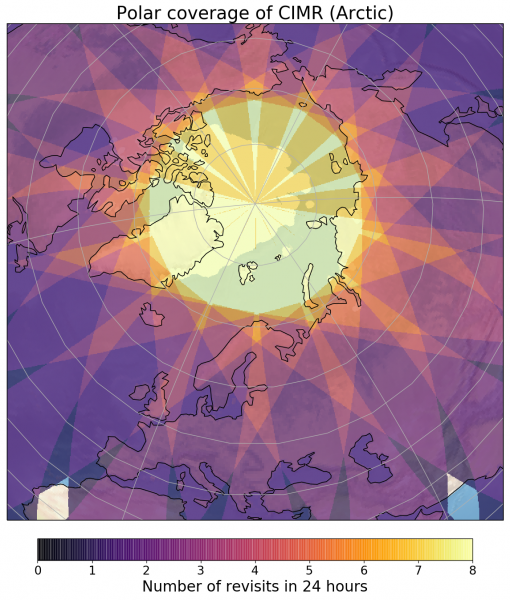
Potential coverage over Arctic by CIMR. (MET Norway – T. Lavergne)
Note: More CIMR coverage plots are also available.
This campaign is a team effort involving ESA, DTU Space, Aalto University, Harp Technologies, the Finnish Meteorological Institute, University of Bremen, the Danish Meteorological Institute and the Norwegian Meteorological Institute.
The aim is to collect data that will help develop new algorithms for sea-ice concentration and sea-surface temperature – CIMR’s core business.
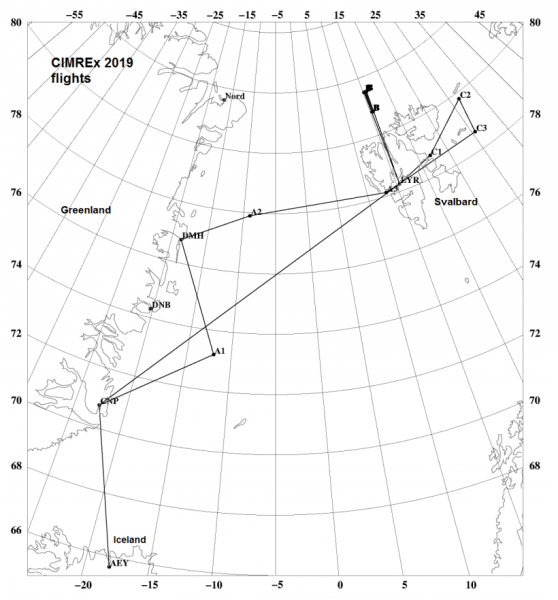
CIMRex flight plan. (DTU Space-R. Forsberg)
The campaign involves flying a system called the HUTRAD 2.0, to measure the brightness temperatures of different ice regimes and open water at three different frequencies, 6.8, 10.65 and 18.7 GHz, corresponding to the C, X and Ku/K microwave frequency bands.
Documenting the brightness temperatures at these different frequencies for the open water, first-year ice and multi-year ice, for example, will provide reference information for CIMR and on-going simulation studies.
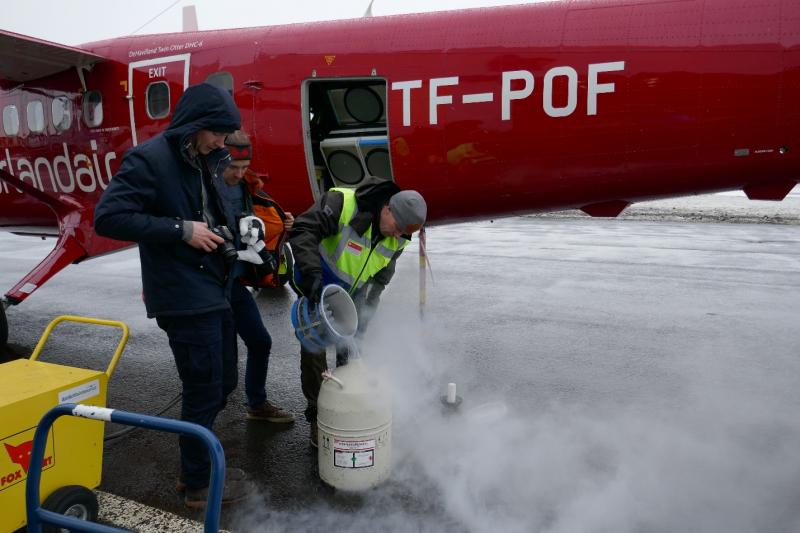
Dealing with the liquid nitrogen for the calibration of Hutrad 2.0. before the flight. (ESA)
The campaign started in Iceland this weekend. The team gathered in Akureyri and was greeted by snow. The first tasks included mounting the HUTRAD 2.0 and other instruments on the Norlandair Twin Otter.
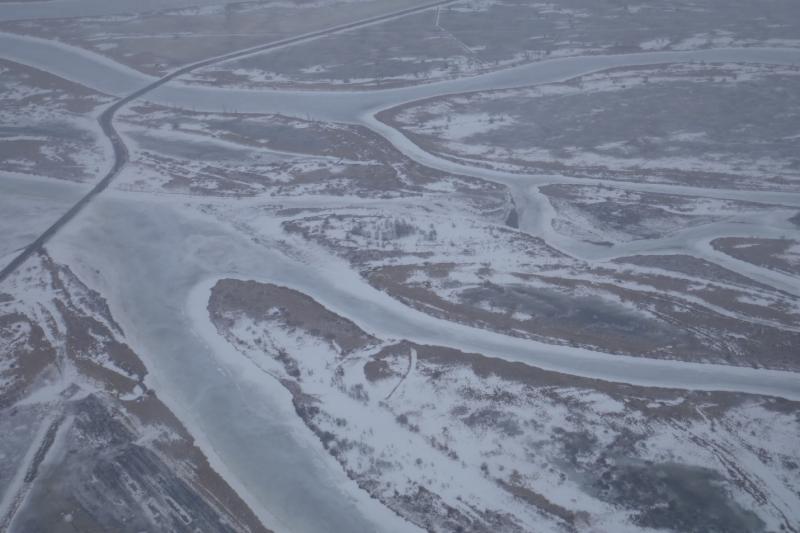
View from above. (ESA)
And then, despite the wind and snow, the team carried out the first flight to do a quality check on the radiometer data, which all went well.
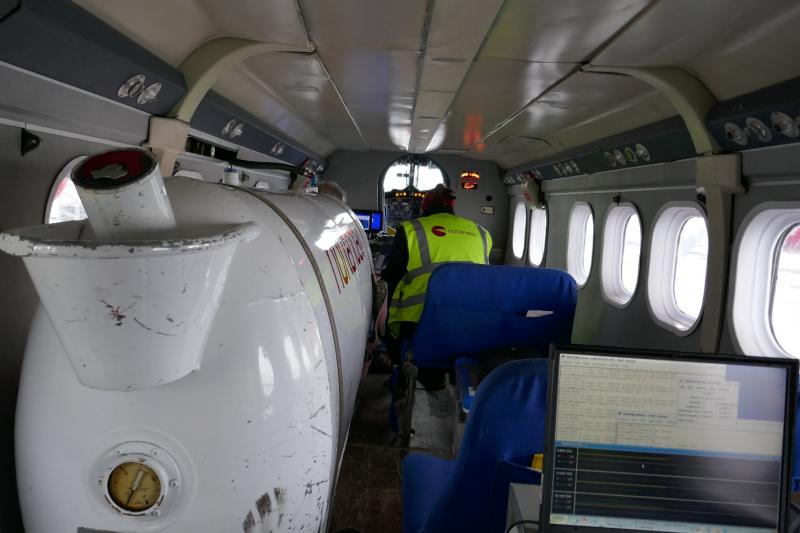
Not a lot of space to move inside the Twin-Otter. (ESA)
The next step is to split the team, with half heading towards Svalbard on a commercial flight and the other half travelling in the Twin Otter with one stop in Greenland.
The weather forecast for Longyearbyen looks promising although temperatures are between -15oC and -25oC.
Post from: Tânia Casal (ESA Scientific Campaign Coordinator)








Discussion: no comments